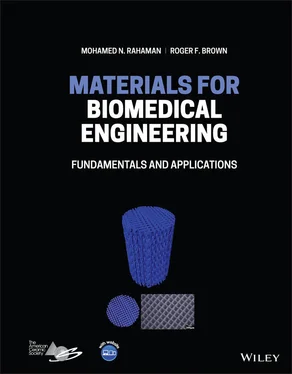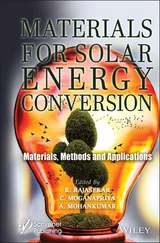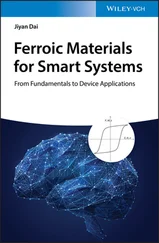2 5.2 Distinguish between the terms surface tension and surface energy.
3 5.3 Determine the contact angle of a droplet of deionized water on ultrahigh molecular weight polyethylene (UHMWPE), given that the densities of water and UHMWPE are 1.0 and 0.94 g/cm3, respectively, the surface tension of water is 73.0 mN/m, and the surface energy of UHMWPE is 36 mJ/m2.
4 5.4 The contact angle of a droplet of deionized water on a microrough surface of silicon nitride was observed to decrease from 66° ± 9° to 30° ± 9° in 30 minutes. Suggest an explanation for the decrease in contact angle.
5 5.5 Explain the significance of the critical surface tension in relation to biomaterials.
6 5.6 In an X‐ray photoelectron spectrum of titanium, is the adventitious C 1s peak expected to be at a higher or lower binding energy than the O 1s peak? Is the Ti 2s peak expected to be at a higher or lower binding energy than the Ti 2p peak? Explain.
7 5.7 The composition of the oxide surface layer on silicon nitride (Si3N4) can change with depth. Briefly describe a method for studying the change in surface composition with depth and, in general terms, the expected change in surface composition.
8 5.8 Explain how the following biomaterials develop a surface charge when implanted in the physiological environment: (a) titanium, (b) silicon nitride, and (c) PEEK.
9 5.9 Briefly explain the type of surface topographical features that are expected to influence the response of cells.
1 Bjursten, L.M., Rasmusson, L., Oh, S. et al. (2010). Titanium dioxide nanotubes enhance bone bonding in vivo. Journal of Biomedical Materials Research. Part A 92: 1218–1224.
2 Bock, R.M., Jones, E.N., Ray, D.A. et al. (2017). Bacteriostatic behavior of surface modulated silicon nitride in comparison to polyetheretherketone and titanium. Journal of Biomedical Materials Research. Part A 105: 1521–1534.
3 Chen, Q., Zhang, D., Somorjai, G., and Bertozzi, C.R. (1999). Probing the surface structural arrangement of hydrogels by sum‐frequency generation spectroscopy. Journal of the American Chemical Society 121: 446–447.
4 Fox, H.W. and Zisman, W.A. (1950). The spreading of liquids on low‐energy surfaces. I. Polytetrafluoroethylene. Journal of Colloid Science 5: 514–531.
5 Fox, H.W. and Zisman, W.A. (1952). The spreading of liquids on low‐energy surfaces. III. Hydrocarbon surfaces. Journal of Colloid Science 7: 428–442.
6 Girifalco, L.A. and Good, R.J. (1957). A theory for the estimation of surface and interfacial energies. I. Derivation and application to interfacial tension. The Journal of Physical Chemistry 9: 904–909.
7 Lausmaa, J. (1996). Surface spectroscopic characterization of titanium implant materials. Journal of Electron Spectroscopy and Related Phenomena 81: 343–361.
8 Marmur, A. (2003). Wetting on hydrophobic rough surfaces: to be heterogeneous or not to be. Langmuir 19: 8343–8348.
9 Ratner, B.D. (2013). Surface properties and surface characterization of biomaterials. In: Biomaterials Science: An Introduction to Materials in Medicine, 3e (eds. B.D. Ratner, A.S. Hoffman, F.J. Schoen and J.E. Lemons), 34–55. New York: Elsevier.
10 Schwartz, Z., Raz, P., Zhao, G. et al. (2008). Effect of micrometer‐scale roughness of the surface of Ti6Al4V pedicle screws in vitro and in vivo. The Journal of Bone and Joint Surgery. American Volume 90: 2485–2498.
11 Xu, L.C. and Siedlecki, C.A. (2012). Submicron‐textured biomaterial surface reduces staphylococcal bacterial adhesion and biofilm formation. Acta Biomaterialia 8: 72–81.
12 Xu, L.C., Wo, Y., Myerhoff, M.E., and Siedlecki, C.A. (2017). Inhibition of bacterial adhesion and biofilm formation by dual functional textured and nitric oxide releasing surfaces. Acta Biomaterialia 51: 53–65.
1 Gittens, R.A., Olivares‐Navarrete, R., Schwartz, Z., and Boyan, B.D. (2014). Implant osseointegration and the role of microroughness and nanostructures: lessons for spine implants. Acta Biomaterialia 10: 3363–3371.
2 Schwartz, Z., Lohmann, C.H., Oefinger, J. et al. (1999). Implant surface characteristics modulate differentiation behavior of cells in the osteoblastic lineage. Advances in Dental Research 13: 38–48.
Part III Classes of Materials Used as Biomaterials
Конец ознакомительного фрагмента.
Текст предоставлен ООО «ЛитРес».
Прочитайте эту книгу целиком, купив полную легальную версию на ЛитРес.
Безопасно оплатить книгу можно банковской картой Visa, MasterCard, Maestro, со счета мобильного телефона, с платежного терминала, в салоне МТС или Связной, через PayPal, WebMoney, Яндекс.Деньги, QIWI Кошелек, бонусными картами или другим удобным Вам способом.












